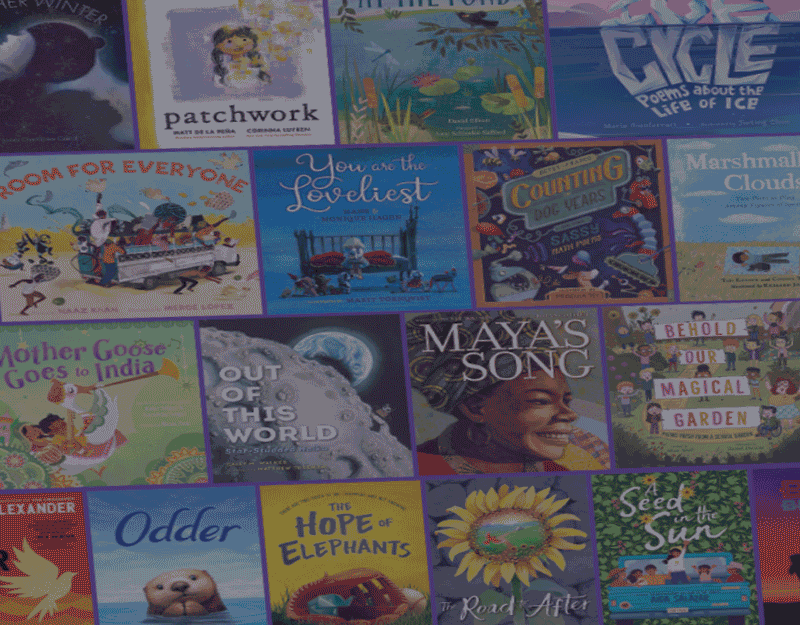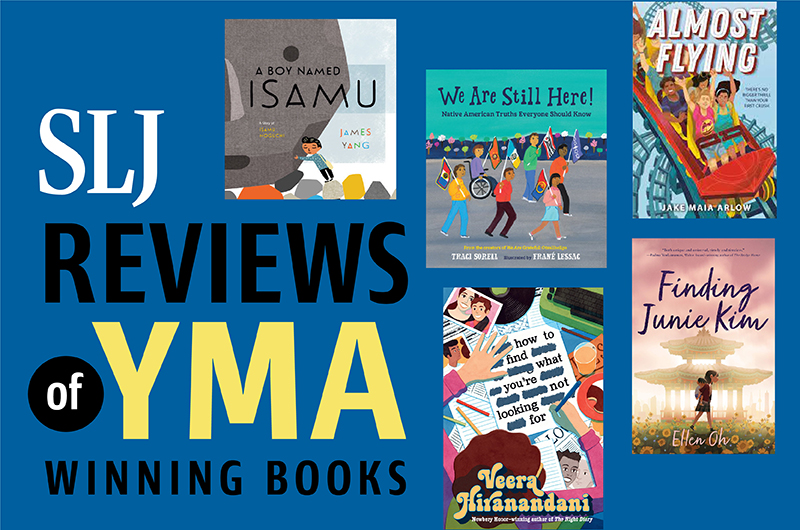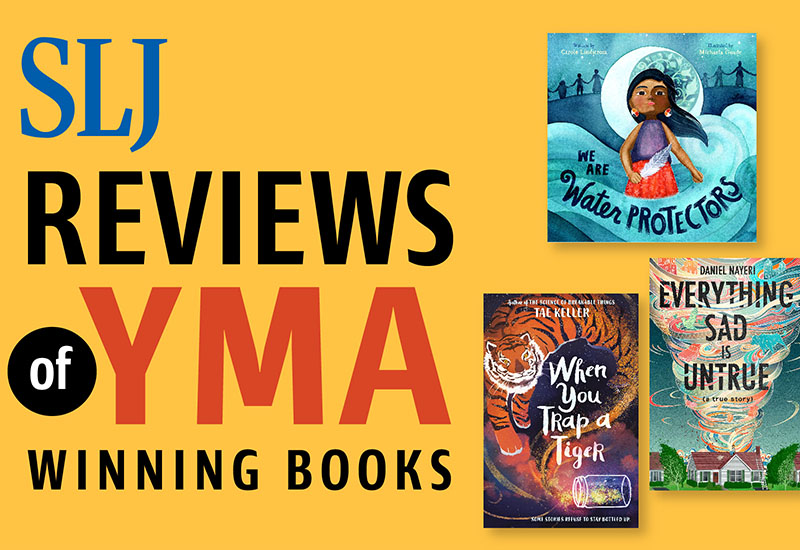Exploring Adaptations and Design with Seashells: More Than a Home

Seashells: More Than a Home
Written by Melissa Stewart, Illustrated by Sarah Brannen
Published by Charlesbridge, 2019
ISBN 978-1-58089-810-2
Grades K-Up
Book Review
“Spiraled or spiky, round or ridged, shells come in all sorts of shapes and sizes, and all the colors of the rainbow. That’s because seashells have so many different jobs to do.” Seashells: More than a Home, Melissa Stewart and Sarah Brannen’s companion volume to their 2014 Feathers: Not Just for Flying, explores the many duties performed by shells and celebrates nature’s diversity. The book is also an introduction to mollusks: bivalves, cephalopods, chitons, gastropods, and scaphopods. Mollusks mentioned in the book range from the familiar (scallop, clam, mussel) to the more obscure (ever heard of the yellow-coated clusterwink?). Following the structure and style of Feathers, Stewart uses skillfully selected similes and alliteration to compare the actions of seashells with the actions of other living creatures or inanimate objects. For example, “Seashells can let in light like a window…or belch out waste like a ship’s smokestack.” Each simile is supported by a short paragraph of explanatory text. This rumination on adaptation offers readers just enough information to understand the range of creatures that comprise the mollusk family and the necessity of certain adaptations for survival. Brannen’s watercolor end pages reveal the location of mollusks’ natural habitat with accompanying maps; throughout the book she foregrounds a multicultural group of child scientists exploring the seashore, notebooks in hand. Each simile is supported by a visual representation of the objects or living beings being compared to the seashell, simultaneously supporting reading comprehension and conceptual understanding. An author’s and illustrator’s note is included in the back matter, as well as a bibliography. Ideal for explorations in science, language arts, and social studies, for whole class and small group explorations, and for quiet re-readings by shell-lovers and beachcombers, Seashells: More than a Home has many roles to play in the classroom and beyond.
Teaching Ideas and Invitations
Grades K and Up
Vivid Verbs and Rich Adjectives. Throughout the book, Stewart uses vivid verbs to describe mollusk movement, such as: nestle, tunnel, pry, and bore. After reading the book aloud, ask students to identify verbs they remember. Walk through the book, read excerpts, and ask the students to locate the vivid verb. Next, tell students they are going to have the opportunity to develop equally rich adjectives to describe seashells. Assemble a group of shells, either by gathering them from the ocean if you’re on the coast, borrowing from friends and family, or creating a slideshow presentation of seashell photographs. Ask students to sort the shells into groups based on their appearance. Have them move through stations in small groups, using their five senses to develop a list of adjectives for each shell. Once your lists are created, ask students what other objects their adjectives could describe.
ADVERTISEMENT
ADVERTISEMENT
Grades 2 and Up
Observation Notes: Adaptation Research in Your Community. On every page of the book, we see either children conducting research using small spiral notebooks, or insets of small spiral notebooks that provide visual information about mollusk shells. Provide each of your students with the same type of notebook (perhaps by asking a local stationery or office supply store for a donation, or by asking local companies if they have excess). For several days, go for walks in the area by your school. Have students observe and take notes on animals, plants, or trees that make them curious. Encourage students to make observations on their way to and from school as well. Have students then research an animal, plant or tree. Next, put students in small groups to compare and contrast information about their animal, plant, or tree. As they share their information, ask students to help one another identify the specific adaptations of each student’s research subject. Support them in creating individual, paired, or small group compare and contrast books on adaptations.
Embodying Nature’s Design. In an April 2018 blog post, author Melissa Stewart writes about a child reader so fascinated by the Galapagos tortoise described in Melissa’s Pipsqueaks, Slowpokes, and Stinkers that she went on to create physical models of the tortoise’s adaptations, in order to experience a “deeper understanding of the animal’s way of life and how it experiences the world.” Team up with your art teacher, your makerspace lab teacher, or your school librarian; divide students up into pairs or small groups, and have each group create a human child-size seashell featured in Seashells: More than a Home. Collect cardboard boxes and other recyclable objects to serve as the base for student shells. Ask students to demonstrate the featured adaptation from the book with their seashell model. Ideally, students can take turns climbing in and out of their shell to demonstrate that action.
End Pages as Research Launch for Mollusk Habitats. The end pages offer sketches of seashells with maps that highlight the mollusks’ range. Use this map as a launch for student research on mollusk habitats. Partner with your school librarian to gather print and digital sources on the various bodies of water and nearby continents. Have students create a map of the world mural with information on mollusks and their habitats. Students may want to adopt Sarah Brannen’s watercolor painting style, and create small watercolor “inserts” on the map, close-up paintings of their mollusk within its habitat. As students present their mural, have them articulate how the mollusk shells serve as an important adaptation for each mollusk in its particular habitat.
Grades 3 and Up
Writing Expository Literature: Duet Reading of Seashells, More than a Home and Feathers, Not Just for Flying. Read aloud both Seashells: More than a Home and Feathers, Not Just for Flying. Have students compare and contrast both books. To do so, create a three-column chart and the following horizontal headers: text structure, writing style, and adaptations. Vertically, have two sections, one for Feathers and one for Seashells. Have students make observations of the text structure in each book and take notes in that column. Next, have them consider the writing style in each book and what stands out. Finally, have them share what they notice about adaptations in each book. You may preteach the word adaptation, or you may see what students do with your question, and whether they can locate the adaptations doing their own critical thinking and develop their own preliminary definition. Next, have students research, write, and illustrate their own expository literature.
ADVERTISEMENT
ADVERTISEMENT
Nonfiction Categories: Melissa Stewart Author Study. Have your students read a wide selection of Melissa Stewart’s science-based nonfiction picture books. Work with your school and public librarian to gather as many books as possible. As students read, have them take notes on what they notice about her topics, her writing style, and the kinds of illustrations used in the books. Once students have read a range of Melissa’s books, have them sort the books in small groups, putting books in different piles based on what they have in common with one another. Have the groups report out on the rationale for their different piles. Next, share Melissa’s 5 Categories of Nonfiction for Kids with them. Have them look at their piles and resort the books by the five categories. What categories are missing? Send students off to the classroom and school library to find those books. Have a conversation about why it is helpful to know about these categories. How does this help them as readers?
Unknown Predator Portrait Gallery. Throughout Seashells, Melissa Stewart references predators who try to eat various mollusks. Sometimes, those predators are named and sometimes readers have to infer what/who the predator is based on Sarah Brannen’s illustrations. After reading the book, have students make a list of the different predators they think are featured in the book. Next, put students in small groups to research that predator. Partner with your school librarian for print and digital resources to support students’ work. Ask students to identify the adaptations the predators have that help them defend themselves and eat their prey. Have each group create a Predator Portrait with an illustration of that predator and information about that predator’s adaptations.
Write and Illustrator Melissa and Sarah’s Next Book! In the author’s note for Seashells, Melissa Stewart writes that she got the idea for the book when she first saw Sarah Brannen’s final two-page spread for Feathers. After completing the book, read the author’s note to your students, and then have them explore the final page of Feathers. What connections do they find? Based on this experience, what information is on the last two-page spread of Seashells? Have your students make a list of the topics Melissa and Sarah could research next (hint: castles, writing tools, rocks, clothes, ocean water, beaches, and sand erosion). Have students team up in groups and research and write those books, drawing upon the writing and illustrating styles in Seashells and Feathers as mentor texts, and Melissa and Sarah’s author’s and illustrator’s notes, as well as the book’s bibliography, as examples of mentor processes for researching, writing, and illustrating science-based concept books.
Grades 6 and Up
Critical Literacy
Ocean Plastics and Mollusks. Many middle grade readers will find Seashells: More than a Home a relatively easy book to access. But the information contained in the text is still quite complex. Use this book as a starting point for a conversation about mollusks, particularly those like oysters that serve as water filters, and the problem of plastic. Have students read the book and discuss the adaptations in small groups. How are the mollusk adaptations similar to and different from one another? What do they learn about mollusks? What new questions do they have? Use the online resources listed below to have students learn more about mollusks. Have students also explore and curate videos and photographs of mollusks. Next, have students read at least one article on ocean plastics. What is the impact of plastic on mollusks? Why is this so problematic for the health of our oceans? Next, have them explore the Plastics Oceans website. After reading and debating about our plastic problem, have students decide what action they want to take with their newfound information. Do they want to create public service announcements via video or poster? Do they want to find out more about what efforts are already happening, in your region or elsewhere in the United States, to clean the ocean and/or cut down on plastic? Do they want to write letters to their member of Congress and senator? Speak at a local city/town council meeting about the problem? Bring in guest speakers to learn more? Allow students to make decisions about the texts they want to create and the audiences with whom they will share those texts.
Further Explorations
Digital Resources
Melissa Stewart’s Video Mini-Lessons on Nonfiction Writing
Melissa’s 5 Categories of Nonfiction for Kids
Mollusks: Shelled Masters of the Marine Realm, Harvard Museum of Natural History
“New Techniques Open Window into Anatomy of Mollusks,” Woods Hole Oceanographic Institution, Woods Hole, MA
“Doing Laundry Can Be Deadly for Clams, Mollusks, and Other Marine Animals,” Smithsonian Magazine, October 13, 2016
“Microplastics in Our Mussels: The Sea is Feeding Human Garbage Back to Us,” The Guardian, June 8, 2018
“Ocean Plastic Education Resources,” National Geographic Society
Shellfish Restoration, East Coast Shellfish Growers Association
The Pacific Shellfish Institute
Gulf United for Lasting Fisheries of the Audubon Nature Institute, Gulf of Mexico
Books
Campbell, S. (2010). Growing patterns: Fibonacci numbers in nature. Ill. by R. Campbell. Boyds Mill Press.
Sidman, J. (2011). Swirl by swirl: Patterns in nature. Ill. by B. Krommes. Houghton Mifflin.
Stewart, M. (2017). Can an aardvark bark? Ill. by S. Jenkins. Beach Lane Books.
Stewart, M. (2014). Feathers, Not Just for Flying. Ill. by S. Brannen. Charlesbridge.
Stewart, M., Young, A. (2013). No monkeys, no chocolate. Ill. N. Wong. Charlesbridge.
Filed under: Announcements
About Mary Ann Cappiello
Mary Ann is a professor of language and literacy at Lesley University. A former public school language arts and humanities teacher, she is a passionate advocate for and commentator on children’s books. Mary Ann is the co-author of Teaching with Text Sets (2013) and Teaching to Complexity (2015) and Text Sets in Action: Pathways Through Content Area Literacy (Stenhouse, 2021). She has been a guest on public radio and a consultant to public television. From 2015-2018, Mary Ann was a member of the National Council of Teachers of English's Orbis Pictus Award for Outstanding Nonfiction (K-8) Committee, serving two years as chair.
ADVERTISEMENT
ADVERTISEMENT
SLJ Blog Network
Winter Light: An Aaron Becker Interview and Video Trailer Reveal!
Tegan and Sara: Crush | Review
The Seven Bills That Will Safeguard the Future of School Librarianship
Take Five: Dogs in Middle Grade Novels
Gayle Forman Visits The Yarn!
ADVERTISEMENT







